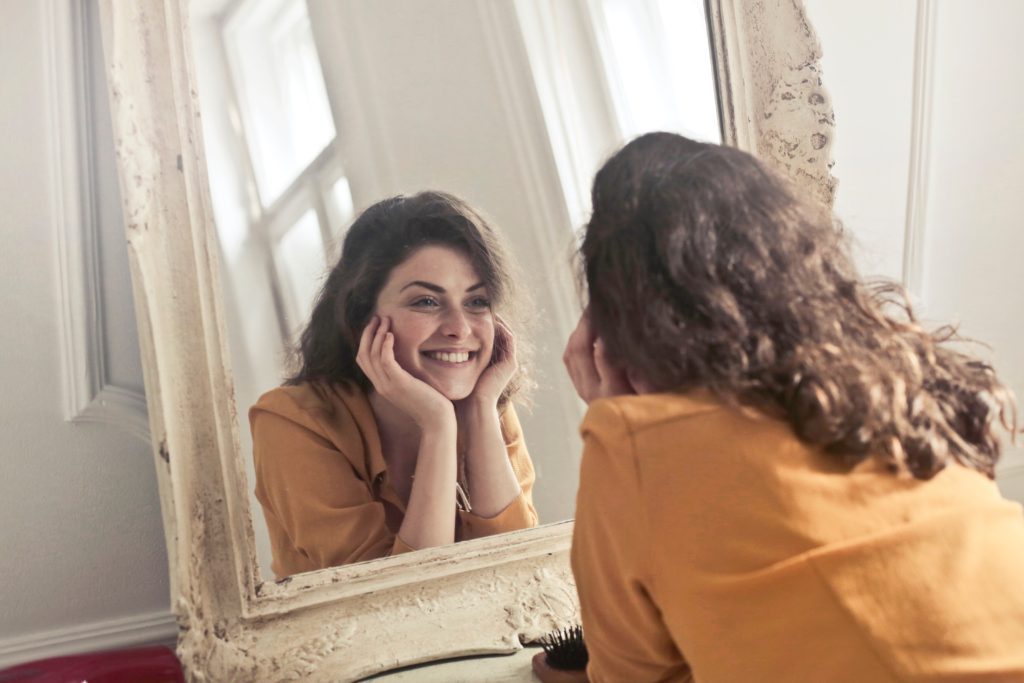
My relationship with anxiety began to shift when I learned to stop resisting it and befriend it. Sounds backward, right? We are supposed to fight anxiety to overcome it; at least, that is what social norms taught me.
Mindfulness meditation has illuminated a completely different approach. Allowing unpleasant sensations reflects similar principles to the commonplace practice of Cognitive Behavioral Therapy (CBT).
CBT is a type of talk therapy used to improve mental health. A core belief in CBT is that people’s thoughts and feelings are determined by one’s interpretations of a situation rather than the situation itself. (1)
Nonjudgemental awareness, a pillar of mindfulness, supports the capacity to see a situation for what it is rather than the emotional perception of a situation.
Getting Comfortable with Being Uncomfortable
Being comfortable with being uncomfortable is an impactful skill in developing higher emotional awareness. Gaining more insight into felt emotions can aid in the management of negative or overwhelming ones.
It is only human to resist that which is unpleasant and grasp for what is pleasant. A theory presented to me by Tara Brach and Jack Kornfield in “The Power of Awareness,” an online mindfulness course. (4) After all, our ancestors avoided dangers to survive.
When thoughts seem dangerous things can get particularly uncomfortable. The cliff notes version, unwanted intrusive thoughts are often violent, sexual, or socially unacceptable thoughts that cause emotional distress and fear. (2)
Unwanted intrusive thoughts are surprisingly common, with nearly 6 million people experiencing them in the US alone. (2) “People tend to try desperately and urgently to get rid of the thoughts, which, paradoxically, fuels their intensity. The harder they try to suppress or distract or substitute thoughts, the stickier the thought becomes,” explain experts at the Anxiety and Depression Association of America. (2)
“People tend to try desperately and urgently to get rid of the thoughts, which, paradoxically, fuels their intensity. The harder they try to suppress or distract or substitute thoughts, the stickier the thought becomes.”
Anxiety and Depression Association of America.
For me, resisting the urge to resist thoughts and feelings was a lot easier said than done. In fact, it seemed hypocritical in nature. The basics of mindfulness taught me otherwise.
A Superpower called Mindfulness
Mindfulness gave me access to a superpower. The ability to experience unwanted intrusive thoughts and anxiety without resistance. A concept that first puzzled me then enlightened me and in practice, began to change my relationship with anxiety.
Jack Kornfield is one of the primary individuals to bring Buddhist Mindfulness practice to the West. He suggests that the resistance to the pain can actually cause more suffering than the pain itself.
Avoidance, like resistance, is also a coping mechanism that can exasperate anxiety. Many individuals employ avoidance tactics in hopes to reduce the suffering that may be caused by emotions like anxiety.
Contrarily, exposure therapy is a behavioral treatment for anxiety disorders. The therapy is appropriately named as it exposes people to their anxieties and allows them to associate safe outcomes.
Joseph Ledoux is a neuroscientist who has extensively studied brain responses to danger. Joseph wrote in the New York Times, “A more effective treatment approach might be to combine anxiety-producing exposure with strategies that allow one to gain control over the anxiety trigger cues.” (3)
“A more effective treatment approach might be to combine anxiety-producing exposure with strategies that allow one to gain control over the anxiety trigger cues.”
Joseph Ledoux
Michael Rogan, Joseph’s fellow researcher, works with people with social anxiety. Rogan suggests that his clients pair temporary strategies for avoidance with learned relaxation techniques such as controlled breathing, imagery, and mindfulness. (3)
How to Embrace Discomfort
First, allow yourself to be uncomfortable. Start with small experiences.
For me, this would be…
- Going to a restaurant with a large number of options
- Selecting a song to play at a party
- Getting on a crowded elevator
After approaching an uncomfortable just wait. Discomfort will come, as you know it will. Allow the pain to be present in your body.
Verbalizing what the distress feels like can be valuable. For instance, my anxiety feels like a constricting throat and a tight chest.
Next, allow the discomfort to sit, unhidden, in the body. Do not distract yourself with busyness. Distractions like scrolling through Instagram or reaching for a snack.
For me, thinking the word “allow” helps me be conscious of my dodging techniques.
Then simply be aware of the discomfort. If it is too intense, step away to focus on your breath or another anchoring sensation and come back later.
Through using this technique, my body and mind are slowing making room for the discomfort of anxiety. I am becoming familiar with my once sworn enemy. As fear washes into understanding, I am free.




Hey Angela! I really resonate with what you’re saying about intrusive thoughts. It can be very detrimental to our health when avoided (our go-to response). Earlier today I was reminded that anxiety is temporary, but was still hard for me to grasp.
I liked your methods of imagery and imaging the word “allow.”
This was my fave read thus far as CBT is something that I have looked into!
Amath, thank you for your thoughtful comment. Being in the midst of anxiety can be a very interesting and often scary experience. I am glad this article resonated with you. I am looking to post an article more in-depth on CBT in the near future and will be sure to let you know when I do!
[…] of mindfulness can be beneficial for those with anxiety. It helps adapt one’s perception of unpleasant thoughts and […]